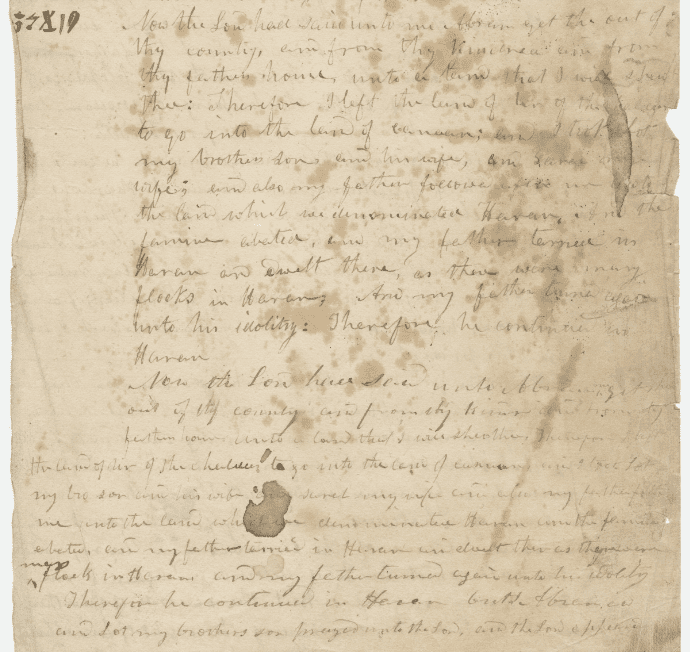Don Woodward called my attention to an impressive detail in support of the recent discovery of one or two excellent candidates for the place Bountiful in the Book of Mormon (a topic I emphasize on my Book of Mormon Evidences page). The article is “‘Lord, whither shall I go that I may obtain ore?’ Geologists Discover Iron in Region of Nephi’s Bountiful by BYU geology professor Dr. Ron Harris, published in Meridian Magazine at LDSmag.com. The article refers to the discovery of iron ore in the region of Salalah in Oman, one of the leading candidates for the place Bountiful.
I was surprised to learn that the discovery involved far more than just finding rocks with some iron content, a feat that I felt would not be particularly impressive. Rather, several geologists searched for and found true iron ore that could be converted into tools using ancient techniques, including the use of a wood-fired furnace. Such iron ore generally is found in igneous rock, which is not abundant in the Arabian Peninsula (at least not readily accessible to humans). Further, most iron ore requires higher temperatures than a wood-fired furnace provides in order to convert it to workable metal. The discovery of the rare iron ore that can fulfill Nephi’s description is an impressive find indeed.











You act like it was a simple process for a small group of people to create sponge iron then imply, it was just another simple process to convert it into a usable product of steel.
Sponge iron is soft and useless for use as nails or to support structures. It can be made into decorative objects and in large mass, into things where heavy weight is useful. To further refine sponge iron into steel is a major undertaking. You completely ignored that and misled the layman reading the article that they solved the problem of Nephi making a steel bow.
It requires considerable skill, experience and a reducing atmosphere furnace with the right amount of carbon to make steel. That is more difficult than finding some iron rich vein in the wilderness and creating sponge iron. Evidence of a steel making facility, even very small, would still be in existence. The slag from the process is indestructible. Nobody has found evidence of a mini-steel mill. No evidence of slag. No evidence there was mining activity. You only propose that it was POSSIBLE. That is pure apologetics misdirection and offering possibilities where no proof exists.
I’m afraid you’ve misread the cited article as well as the Book of Mormon. The Book of Mormon simply says that Nephi was able to find ore near Bountiful for making tools (see 1 Nephi 17:9-11,16). The type of ore is not specified, but iron ore seems to be the most reasonable assumption. Dr. Harris’s article only mentions Nephi’s steel bow (a bow that he brought from Jerusalem, not one that he made in the wilderness) as background information pointing to Nephi’s familiarity with metals – neither he nor I made any suggestion that steel was being made at Bountiful. Iron is entirely adequate for many tools and is probably what Nephi used.
As to your suggestion that sponge iron would be worthless, I disagree and would like to know the basis for your assertion.
In support of Dr. Harris’s statements, I can refer you to the article on sponge iron at http://encyclopedia.thefreedictionary.com/Sponge%20iron:
“Sponge iron is the product created when iron ore is reduced to metallic iron, usually with some kind of carbon (charcoal, etc), at temperatures below the melting point of iron. A spongy mass results (sometimes called a bloom), consisting of a mix of incandescent wrought iron and slag
“The sponge would then be removed from the furnace in which it was created and repeatedly beaten with heavy hammers and folded over to remove the slag, oxidise any carbon or carbide and weld the wrought iron together. This treatment would usually create a wrought iron with about 3 percent slag and a fraction of a percent of other impurities. Further treatment could add back in controlled amounts of carbon, allowing various kinds of heat treatment (e.g. ‘steeling’).
“This was the first way iron was first made in the Middle East, Egypt, and Europe. The advantage of the technique was the lower furnace heat required to make the iron, only about 1000 K or so. The disadvantage, relative to the manufacture of cast iron, is that only small quantities can be made at a time.”
While sponge iron can be worked to create tools, could Nephi have made higher strength metal? Is it possible that Nephi knew how to reach higher temperatures in a crude forge he built? After all, he did construct bellows (1 Nephi 17:11) – again indicating that he knew what he was doing. But the sponge iron hypothesis seems entirely adequate.
I would also suggest that you step back and consider the implications of the discovery of a rare, suitable iron ore in the Arabian Peninsula in a place that is a plausible canidate for Bountiful. Rather than getting all steamed about the difficulty of making steel – which is not what Dr. Harris proposed – I think it would be wise to ask if the mounting evidence for the plausibility of First Nephi might make it worthwhile to reconsider the Book of Mormon with an open heart and mind.
to anonymous:
this was over hundreds of years ago.
I have visited sites only 80 years old and everything has absolutely been destroyed. Weather, nature, and other stressors will take out any sort of structure from previous times. Imagine what it would have done to a steel mill from a thousand years ago. You’re probably not going to find it.
So how did pyramids and crap stay around? They are made out of stone. The chances that the ‘mill,’ if there was one, was made out of stone is pretty slim. That would be unnecessary.
Also, steel can be made with half the requirements you listed.It has been accomplished in the past by other ancient civilizations.
Jerusalem didn’t have steel bows at that time period 600B.C. India was the first to produce steel bows and they did not appear until after 1400 A.D.
If you going to try to say that there are steel bows mentioned in the Bible in King Davids time which would have been 1000 b.c.. I would have to say that the Bible is in error also. Being Mormon Im sure that you will not have a problem with me saying that the Bible is not without error.